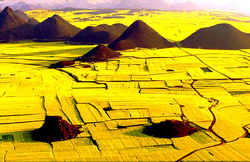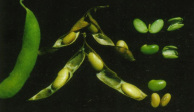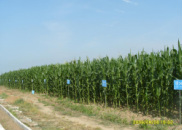Transgenic research
Genetically Modified Organism (GMO), Living Modified Organism (LMO), and Trangenic Organism (TO), meaning the same thing, means any organism that possesses a novel combination of genetic material obtained through the use of modern biotechnology.
In 1985, the first transgenic plant, a Bt-transgenic tobacco resistant to insects, was produced. In 1994, the first commercial release of tomato in the United States was permitted, a species of tomato delay maturation. Since then, transgenic crops were planted increased year by year, and the increasing rate increased. With the commercial release of transgenic crops over the world, most notably rice, soybean, cotton, maize, oilseed rape and so on, the gene flow between transgenic crops and wild relatives raises people's concerns. Trangenic flow has potential to affect evolution of plants and animals, population dynamics, community composition, ecosystem balance and biodiversity. I, a general scientist, would like to dig out these secrets and regulates, try to expoit and maximize the advantage of transgenic crops and minimize their disadvantage. Biosafety of transgenic crops is one of interesting topics...
The safety of transgenic food is very important to human health, and still is the focus of the scientists, the crowd, and plenty of organizations' concern. "Is it safe?", a simple question, it is very difficult to answer, however. Nobody could tell us the truth now except the God, if exsit. Don't worry, but, the time will give us the answer, and the God will bless us if we believe. My opinion? It is not so bad as some people imaging, but if you are able to not eat, don't do.
In 1985, the first transgenic plant, a Bt-transgenic tobacco resistant to insects, was produced. In 1994, the first commercial release of tomato in the United States was permitted, a species of tomato delay maturation. Since then, transgenic crops were planted increased year by year, and the increasing rate increased. With the commercial release of transgenic crops over the world, most notably rice, soybean, cotton, maize, oilseed rape and so on, the gene flow between transgenic crops and wild relatives raises people's concerns. Trangenic flow has potential to affect evolution of plants and animals, population dynamics, community composition, ecosystem balance and biodiversity. I, a general scientist, would like to dig out these secrets and regulates, try to expoit and maximize the advantage of transgenic crops and minimize their disadvantage. Biosafety of transgenic crops is one of interesting topics...
The safety of transgenic food is very important to human health, and still is the focus of the scientists, the crowd, and plenty of organizations' concern. "Is it safe?", a simple question, it is very difficult to answer, however. Nobody could tell us the truth now except the God, if exsit. Don't worry, but, the time will give us the answer, and the God will bless us if we believe. My opinion? It is not so bad as some people imaging, but if you are able to not eat, don't do.
Rice (Oryza sativa)
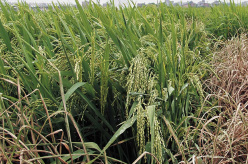
Rice is one of the most important crops, feeding nearly one half of the Global population. In many developing countries, rice is the basis of food security and is intimately associated with local ways of life. The safety of rice therefore involves human life in some ways. As the permission of Bt-transgenic rice release in China in 2009, Chinese people and people over the world focus on this front-page news, and the controversy still around our ears. Safe or dangerous, both the two sides try to provide some evidence to support themselves and persuade the counterpart, but they failed and the controversy continue. The main reason is lacking of enough evidence, including scientific experiments and natrual phenomenon.
Whatever, the presence of the controversy is better than its absence, which is able to keep raising the people's concerns and to potentially enhance the level of scientific research. E-Links of scientists or labs on rice research Prof. Linscombe S.D. |
|
Cotton (Gossypium hirsutum)
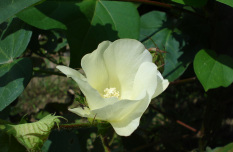
Over the world, there are about 65% of cotton is GM cotton. Cotton is generally considered as to be a self-compatible crop, but it also could cross-pollinate. Outcrossing rate that vary from less than 1% to 47% depends on pollinators, location condition, distance, and rate generally decreases with increased distance.
|
|
